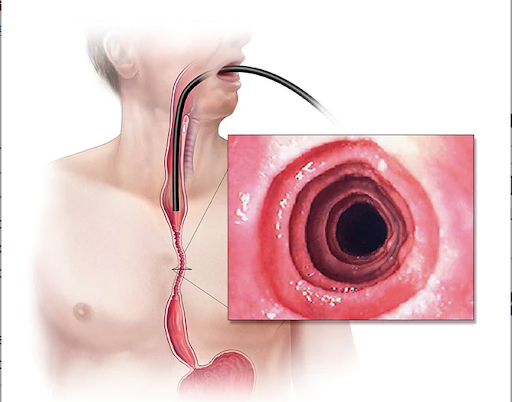
Eosinophilic esophagitis is a chronic immune system disease. It is a type of allergy that happens in the tube inside your body called the esophagus. The esophagus helps food move from your mouth to your stomach. When this happens, the esophagus gets swollen and doesn’t do its job right. It becomes narrow and develops rings or pockets of infection.
The symptoms of this condition occur due to your body’s defense system, called the immune system, which is like an army, making some special white blood cells when it sees something you’re allergic to. These special white blood cells are named as eosinophils. This condition is known as eosinophilic esophagitis, or EE or EoE for short. It can affect people of any age but is more common in white males.
To take control of Eosinophilic Esophagitis, learn more about this condition and manage it and another autoimmune disease in Confident Hormone Club. Join the club to learn more about how to conquer allergies and inflammation and become an empowered and educated advocate for your health with your healthcare team.
What causes EoE(Eosinophilic Esophagitis)?
Eosinophilic Esophagitis is a reaction to foods, acid reflux, or allergens, which can injure or inflame the esophageal tissue. The added inflammation to this sensitive tissue, causes the esophagus to swell and have a much more narrow tube for food to pass, which can cause food to get stuck when you swallow. Things like dust, pet hair, pollen, and mold can cause EoE. Certain genes might also play a role in EoE.
EOE symptoms
Eosinophilic Esophagitis, is a problem that can make people feel different things depending on how old they are. Mostly, it makes it hard to swallow, but it can also include many other symptoms like:
- A heightened awareness of food
- Unintentional weight loss due to eating less
- Vomiting
- Abdominal pain
- Lack of appetite
- Trouble swallowing, especially with solid foods
- Food getting stuck in the esophagus
- Reflux that does not get better with medicines
- Heartburn
- Chest pain
- People with EoE might also feel sad, worried, and lonely, from their heightened awareness of their condition which can make them feel tired.
Finding Out If You Have Eosinophilic Esophagitis

To find out if someone has eosinophilic esophagitis, doctors do a barium swallow, endoscopy, and biopsy. During this test, a tiny camera looks inside the esophagus. Sometimes, it shows rings, white patches, or grooves in the esophagus.
However, even if the esophagus looks okay, a person could still have eosinophilic esophagitis. That’s why doctors take small pieces of tissue called biopsy samples. These samples are checked for too many eosinophils, which are special white blood cells, in the esophagus. Sometimes, they need to take several samples to be sure.
The First Vital Step for Effective EoE Management
In most people with EoE, the main reason it happens is because their body reacts to certain foods. Allergists, who are experts in allergies, can help with EoE related to food allergies. However, the connection between food allergies and EoE is complicated.
In regular food allergies, the ones with symptoms like hives and vomiting right after eating, it’s easy to figure out what food caused the reaction. But with EoE, it’s harder. The reactions take longer to show up, sometimes days, so it’s tough to say which food is causing it.
Common triggers for EoE include dairy products, wheat, eggs, and soy. However, the usual allergy tests like skin tests or blood tests don’t work well for finding these triggers. That’s because EoE reactions are different and not driven by the typical allergy mechanisms.
A person with EoE might be sensitive to one or more foods. Once they figure out which foods are causing the problem and stop eating them, the inflammation in the esophagus usually gets better in a few weeks. But sometimes, even if you feel better, you still need more tests to be sure that the diet is working and to find out which food(s) is causing EoE.
Naturopathic treatment to deal with EoE symptoms
Naturopathic doctors might do tests to find out which foods you might be allergic to, and these foods could be making too many eosinophils gather in your esophagus. Making naturopathic doctors at Make Care Health, will talk to you about your medical history and check how all the different parts of your body are doing to find the best ways to help you feel better.
Our naturopathic doctors often assist patients to feel better and have an easier time swallowing and eating when they have EoE. This helps them avoid needing to take acid-blockers and steroids every day, making their lives better.
The Autoimmune Protocol (AIP) diet can be highly beneficial for individuals dealing with Eosinophilic Esophagitis (EoE), an autoimmune disorder characterized by inflammation in the esophagus. Implementing the AIP diet involves eliminating certain foods known to trigger inflammation and aggravate autoimmune responses.
What is eosinophilic esophagitis cough?
Eosinophilic bronchitis is a common reason for a cough that doesn’t go away. It happens because the tubes in your lungs get swollen, just like in regular bronchitis, however in eosinophilic bronchitis, the swelling isn’t from an infection that will go away with your immune system’s effort, instead your autoimmune reaction is the cause of the inflammation which requires a shift to how your immune system is firing.
Flare-Friendly AIP Lunch Recipes for Soothing Inflammation

Instead of rice, we’re using parsnips in this recipe to create a risotto-like texture. Parsnips are full of good stuff like manganese, phosphorus, and vitamins C, E, K1, B5, and B9. They have a slightly nutty taste that pairs well with beef broth, beef, and mushrooms.
Preparation Time: 15 minutes
Cooking Time: 30 minutes
Servings: 3
Ingredients:
1 tablespoon extra-virgin olive oil (evoo)
1 diced carrot
1/2 medium white onion, diced
1 pound ground beef
8 ounces cremini mushrooms, sliced
2 cups beef broth, divided
1 tablespoon apple cider vinegar or 1/4 cup wine (red or white)
1.5 teaspoons of salt, and add more according to your taste
2 pounds parsnips (about 6-7 cups riced)
1 tablespoon finely chopped fresh tarragon (or 1 teaspoon dried tarragon)
1/2 cup full-fat coconut milk
Directions
- To make parsnips like rice: Peel the parsnips and cut them into big pieces. Put them in a food processor and pulse until the pieces are similar in size and about as big as a large grain of rice. Using about 2 pounds of parsnips (5-6 medium ones) should give you 6-7 cups after ricing.
- Now, heat a big frying pan on medium-high heat. Put in olive oil, onion, and carrot. Cook until the veggies are soft, which takes about 5 minutes.
- Add the ground beef to the pan and cook, stirring to break it up, until it turns brown, usually around 3-5 minutes.
- Next, add mushrooms, 1 cup of broth, wine (or vinegar), and salt. Turn the heat up high and cook until most of the liquid disappears, around 5-8 minutes.
- Put the parsnips and the remaining 1 cup of broth into the pan and stir to mix. Lower the heat to medium-low, cover, and cook for 8-10 minutes until the parsnips are soft and mushy. Give it a few stirs while it’s cooking. If things start sticking because the pan is getting dry, add a few tablespoons of broth or water. If your big frying pan isn’t big enough for everything, you can take out the beef mixture before adding the parsnips. Then mix the beef back in right before serving.
- Add coconut milk and tarragon and stir it in. Turn off the heat and let it sit on the stove covered for another 2-3 minutes. Try it and add extra salt if required.
- If you like, top it with chopped parsley. Now it’s ready to serve!

